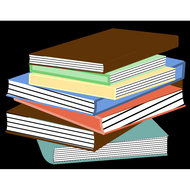
(View Complete Item Description)
The Renaissance time period was one of the most pivotal moments in history for art and inventions. It was a time of inquiries and freedom to explore and create ingenuity at its finest. As a result, many artists rose to fame and are know today like Van Gogh, and many new inventions made life easier or made it easier to take away by an enormous amount of advancements in weaponry. The goal is for students to become more familiar with the Renaissance and important advancements made at the time. This allows for a lot of independent thinking and good persuasive arguments as the most important advancement of the time can be argued. This is important for 9th graders because it is crucial to understand how the advancements made back then still are important to this day and have an impact on our everyday lives more than you would even know.In groups of 4, students will be researching different inventions or art forms of the Renaissance, and then ultimately present their findings to the class to show what they learned and why it is important. The presentation must have a persuasive well thought out argument as to why it is important and as to how it affects modern life and also life in that time period. In general, these inventions and art transformed our lives and they should be talked about. The students should do research on inventions/art forms of the time and then discuss the importance of them before settling on one that has greatly impacted them. This will help them become engaged and see why this time period was so important. It will also give them the creativity because it was a time of many inventions/art forms and they get to choose which one they found was most important and useful. To begin the lesson, we will begin by watching a short video to just give the students an example of a few of the inventions of the time and lead them into the driving question that they will be researching. They will also read a short article on some more inventions and then go into a full fishbowl conversation on different inventions. They will also be reading an article on some art forms of the time period. This will be facilitated by the teacher, but the kids will have the main arguments. They will be discussing different inventions/art forms and how it has affected their daily life, cool inventions created during that time, and also how the inventions have changed over time to what they are today. The discussion should give them a better understanding of what was going on at the time and why is was important. It’s crucial for them to hear about a bunch of inventions/art forms so that they can argue for their project extremely well because they have already learned about a few. Over the course of the lesson, the students will research and explore many key inventions/art forms of the Renaissance in order to gain a better understanding of everything that was going on at the time. They will most likely have to pick an invention based on their daily lives and things they like to do. Some inventions/art forms may seem more important to one group over and that is reasonable. By the end of the lesson, there are many different possibilities of important inventions/art forms that the students. For example, some students may focus on inventions/art forms that helped advance knowledge whereas others might pick inventions/art forms they find cool that has personally impacted their lives.During the final presentation, students should present their visual aid and argue why it is important. They also need to be able to explain where it originated and how it has impacted their lives. They also should be prepared to answer questions from other groups on why it is the most important and be ready to defend themselves.
Material Type:
Lesson Plan
Author:
Lela Anthony




















